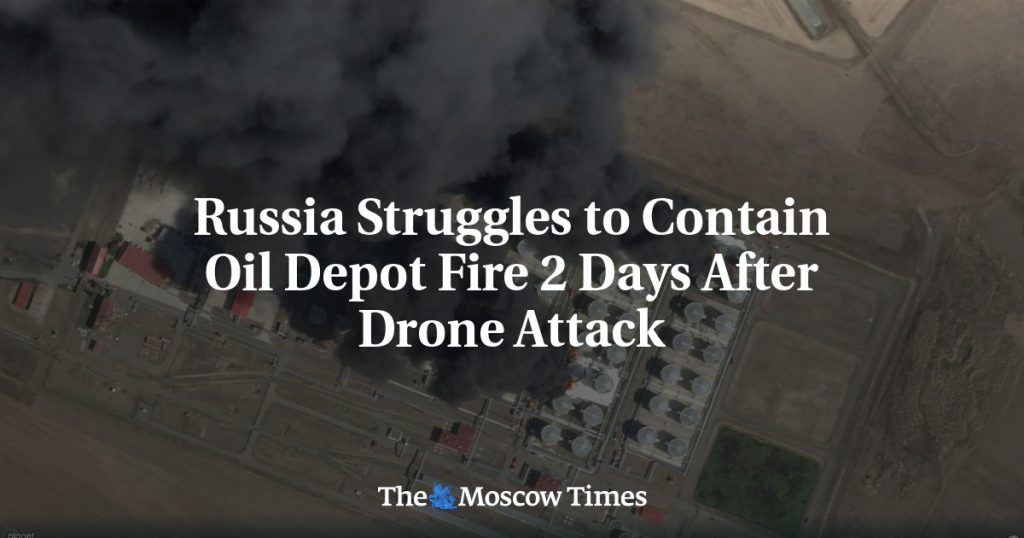Firefighters in the Rostov region of southern Russia were actively working to extinguish a large blaze at an oil storage site that had been ignited by a Ukrainian drone strike two days earlier. The fire started after Russian air defense systems shot down Ukrainian drones in Proletarsk, causing thick black smoke to fill the skies over the town. The Kavkaz oil and petroleum storage facility was the target of the drone attack, leading to a fire that had spread across an area of 10,000 square meters. Authorities had deployed 520 firefighters and four aircraft to contain the blaze, but the intense heat made it difficult for fire trucks to get close to the burning fuel tanks.
Despite the challenging conditions, firefighters continued their efforts to control the fire in Proletarsk, where 20 out of the 74 fuel tanks at the depot were still burning as of Tuesday morning. The district head, Valery Gornich, reported that the sheer intensity of the heat had hindered their progress. Proletarsk is situated about 250 kilometers away from the Ukrainian border and 350 kilometers from areas in eastern Ukraine that are currently under Kyiv’s control. Since the start of Russia’s invasion of Ukraine in 2022, there have been instances of Ukrainian strikes on Russian oil and gas facilities as a form of retaliation for Russian attacks on Ukraine’s energy infrastructure.
As a response to ongoing attacks on independent media outlets in Russia, The Moscow Times appealed for support from its readers, emphasizing the importance of maintaining unbiased journalism in the face of government repression. The publication highlighted the challenges it faced due to being labeled as an “undesirable” organization by Russia’s Prosecutor General’s Office. These actions were seen as attempts to suppress independent reporting that could potentially challenge the decisions made by the Russian leadership. The call for support aimed to ensure that The Moscow Times could continue to provide accurate and reliable news coverage despite the obstacles it currently faced.
The conflict between Russia and Ukraine has escalated significantly since the full-scale invasion launched by Russia in 2022. With both sides engaging in military actions, there have been numerous instances of attacks on critical infrastructure, including oil and gas facilities. The targeting of such facilities has not only led to environmental concerns due to fires and potential spillages but has also played a strategic role in the ongoing conflict. Both Russia and Ukraine have justified their actions as retaliation for each other’s aggression, resulting in a cycle of violence that has impacted civilians on both sides of the border.
The involvement of drones in the conflict has added a new dimension to the ongoing hostilities between Russia and Ukraine. Ukrainian drones have been utilized to target key Russian infrastructure, causing significant damage and disruption. The use of drones for military purposes has raised concerns about the escalation of technological warfare and the potential for civilian casualties. As both sides continue to deploy advanced weaponry in the conflict, the risk of unintended consequences and collateral damage remains a critical issue. Efforts to contain and mitigate the impact of such attacks on critical infrastructure are vital to minimizing the humanitarian and environmental fallout of the conflict.


